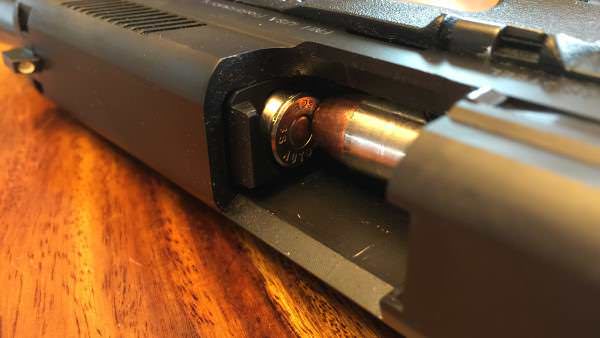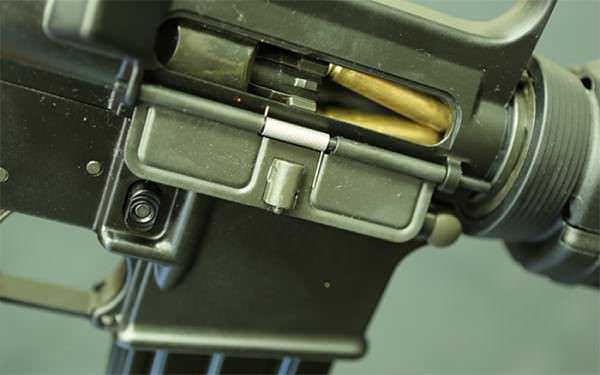

USA – -(Ammoland.com)- Firearms, like any mechanical tool, are capable of malfunctioning.
Whether it’s the result of user error or an unavoidable part failure, jams happen and while being a mere annoyance for plinker, they can have dire consequences for someone who owns a pistol for protection.
Below we address the most common stoppages you can encounter when shooting a semi-automatic firearm and how to recognize and resolve them.
Keep in mind that if you notice a problem with your firearm, do not attempt to shoot it until you have assessed the issue and always follow the NRA’s fundamental rules for safe gun handling:
1. ALWAYS keep the gun pointed in a safe direction.
2. ALWAYS keep your finger off the trigger until ready to shoot.
3. ALWAYS keep the gun unloaded until ready to use.
If you are not comfortable handling the situation on your own, there’s no shame in getting the attention of your instructor or a range officer and asking them to assist you.
Without further ado, here are the three most common types of semi-auto stoppages:
Firearm Stoppages : Failure to Feed
What happens: You pull the trigger and the gun goes click instead of boom. While it’s often a dud cartridge that just won’t fire, it could also mean the magazine failed to load a new cartridge into the chamber.
What to do: Tap the bottom of the magazine with the palm of your support hand to ensure it’s fully seated. Invert the gun and rack the slide to clear any stoppage and load a fresh round into the chamber. Finally, re-assume the shooting position and assess the target area. This is known as the Tap, Rack and Assess drill.
Firearm Stoppages : Failure to Eject

What happens: Also known as a stovepipe, this stoppage occurs when you pull the trigger and nothing happens, similar to a Failure to Feed. But with this stoppage you’ll notice the cartridge from your previously fired round is now stuck in the ejection port, resembling… a stovepipe. This jam will also cause your slide to not sit completely forward.
What to do: Like with a Failure to Feed, the Tap, Rack and Assess will suit you here. Tap the bottom of your magazine to make sure it’s seated, rack the slide to feed a new round into the chamber and force the jammed cartridge out, and assess downrange.
Firearm Stoppages : Failure to Go into Battery

What happens: A Failure to Go into Battery occurs when the cartridge is not fully seated in the chamber, forcing the slide to not fully sit forward. A variation of this stoppage, known as a Double Feed, happens when the slide picks up a fresh round before the previous cartridge can be ejected and attempts to seat them simultaneously.
What to do: A Tap, Rack and Assess should work, although you may have to rack the slide a little more vigorously than with the other two types of stoppages. Occasionally you may have difficulty clearing the chamber due to pressure applied by the magazine’s spring. In this case you should remove the magazine, which may take a little force, and rack the slide several times until the chamber has been cleared. Then reload your magazine, give it a good tap on the bottom, rack the slide to load a new cartridge, and assess the target area.
Remember that these are just the three most common types of firearm malfunctions. The basic principle behind the Tap, Rack, and Assess drill is to resolve the stoppage by unloading and reloading the gun, but firearms and bullets can fail in other ways.
If your gun ever performs in a way that seems off, do not try to fire another round until you have determined it is safe to do so.
Stoppages happen from time to time, but the risk can be mitigated through proper stance, using reliable ammunition, and regular maintenance of not just your firearm, but your magazine and any accessories you use. Get in the habit of cleaning your tools after you use them and your guns should enjoy improved reliability and a longer life.


Great and useful article. One thing that should be pointed out though, is why these things happen. A self defense firearm is like the parachute a jet pilot wears. The pilot prays that the day never comes when his/her life depends on a few dollars worth of nylon. But, if that happens the parachute absolutely must work perfectly the first time it’s needed. in other words, You need to be responsible about having a gun the is completely reliable, and for keeping it clean, and in good repair. You need to carry fresh ammo, and rotate out ammo that you… Read more »
Excellent advice Lou and something I do out of habit.
Why do you suggest removing ammo monthly? Is there some magic that happens in the gun that doesn’t happen in the box in the safe or are cartridges like aspirin and have an expiration date? There is no reason to change out ammo monthly unless you one of those guys that insists on breaking down the weapon each night and resetting it up each morning in which case it is highly possible if you rack the weapon hard you actually might over seat the bullet in the cartridge (which then makes it over pressurize and totally possible you will kill… Read more »
There’s one reason that I can think of. When you carry the ammo around you shake the powder. If you shake it long enough, the grains will be churned to smaller pieces, giving you a higher relative burn rate and higher chamber pressure. In extreme cases this can lead to malfunction or even that the gun blows up in your hand. It’s the same reason that reloaders should tumble empty brass, not reloaded rounds. If one or two or twelve months is the correct interval I don’t know, but carrying ammo will change it more than leaving it on the… Read more »
I don’t know how many times I have read on the internet guys that say that they had a fte, ftf, etc. and they can never trust their pistol are rifle from then on. They then say how they sold it to someone and bought this brand and never had a failure again. the brands that never have a failure per these people are Glock, Sigs, H&K, Walther, Kimber, Colt, Springfield, S&W, Makarov, CZ. It must be an expensive process for them, because they always have to get rid of the offending weapon no matter what. The upside to this… Read more »
Failure drills are compulsory at LE ranges, due to limp-gripping of the popular Glock. Fortunately, the trainees learn fast.
YES, that’s exactly my point! — Well said!!
United States, ENGLISH please!
Ignore the pepper gut that types in caps in Mexican !
In the Tap-Tack-Assess drill (TRA) it helps to rotate the pistol about 45 degrees clockwise whole racking the slide, so gravity can aid in clearing (you don’t want the ejected cartridge or brass to fall back into a “stovepipe” position).
IMPORTANTISIMO COMENTARIO,QUE PUEDE SIGNIFICAR EVITAR UN GRAVE PROBLEMA QUE PONGA EN PELIGRO LA VIDA DEL USUARIO DE ARMAS DE FUEGO.DEBEMOS ENTENDER QUE UN ARMA ES UN ELE
MENTO MECÁNICO SUSCEPTIBLE POR LO TANTO DE FALLAR EN ALGUNA OPORTUNIDAD,TANTO MÁS
CUANDO INTERVIENEN CAUSAS AJENAS AL ARMA MISMA EN LAS CUESTIONES DE FALLAS,COMO POR
EJEMPLO,LA CARGA DEFECTUOSA,LA DIFERENCIA EN CONTENIDO DE POLVORA SUPONIENDO QUE
SE HAYA RECARGADO LA MUNICIÓN,Y LA VIGENCIA DE ESA CARGA.
WTF ?